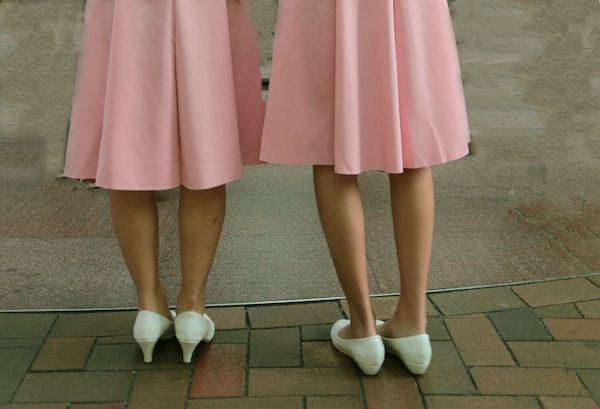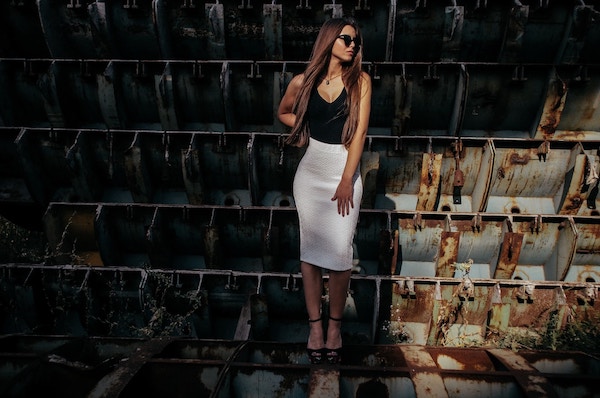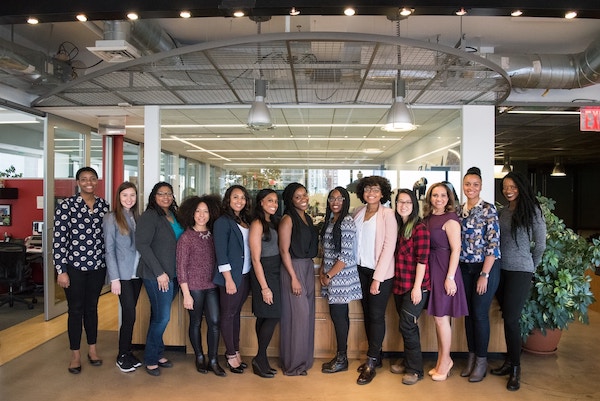The evolution of women’s workwear is a fascinating journey, reflecting not only changes in the workplace but also shifts in society’s values and expectations. What we wear to work speaks volumes about our roles, ambitions, and professional identities. From the early 20th century’s strict corporate uniforms to the more relaxed business casual standards of today, women’s workwear has always been a microcosm of broader sociocultural dynamics. Below, we explore the various stages of this evolution and the continual transformation that women’s workwear undergoes.
The Early 20th Century: Modesty and Femininity

At the beginning of the 20th century, women were typically at home. Nonetheless, women who were working were limited to positions considered appropriate for their gender, such as secretarial roles, nursing, and teaching. Reflecting societal norms, the workwear of this time was characterized by modesty and an emphasis on feminine features.
Skirts were a common choice, reaching down to ankle length, while blouses were long-sleeved and high-necked. The ultimate goal was not to express individuality or power but to maintain a demure, feminine appearance. In essence, women’s workwear was an extension of their domestic dresses, limiting the possibilities for women to create an independent professional identity.
However, this did not mean that these outfits lacked beauty or were devoid of style. You can still find such classic styles represented in modern-day collections like blouse Canada. The embroidery and lace details endemic to these blouses from yesteryears are still evident in fashion today, serving as a reminder of the beauty intrinsic to those early designs.
The Roaring Twenties: Flappers and Freedom
The Roaring Twenties marked a radical shift in women’s fashion. As women gained more social and economic independence, their workwear started to reflect their changing status. The era’s flapper style, characterized by shorter hemlines, dropped waistlines, and straight silhouettes, seeped into workwear.
Women’s workwear began to break away from the restrictions of the previous era with more form-fitting, body-conscious designs. Women started to wear more tailored blouses, introducing the idea of women wearing form-fitting clothes in the professional realm. This change in workwear mirrored the larger societal shifts happening around women’s rights, emphasizing that women were no longer confined to the domestic space.
Wearing trousers was still considered taboo for women. However, the boundary-pushing flapper spirit led to women wearing trousers in more informal settings. This paved the way for even more dramatic transformations in women’s workwear in the coming decades.
The Fifties: Pencil Skirts and Twinsets

During the 1950s, the pencil skirt became a major staple in women’s workwear. The style, which was originally designed by French designer Christian Dior, was heralded for its body-accentuating properties.
The pencil skirt was often paired with a blouse or a twinset for a professional yet feminine look. Shirts were usually tucked into the skirt, presenting a neat, streamlined silhouette that suggested authority and seriousness. This outfit was often completed with a pair of heels, marking a clear shift from the more conservative looks of the past.
The popularity of the pencil skirt and blouse combo was also a reflection of the rising corporate culture. For the first time, significant numbers of women were working in office environments, and their clothing reflected this shift. Women were no longer guests in the workplace, but central players.
The Eighties: Power Suits and Shoulder Pads
Workwear reached new heights in the 1980s, literally and figuratively, with the introduction of the power suit. Women, at this point, were breaking into roles traditionally dominated by men, and women’s workwear mirrored their ascent in the corporate world.
The power suit, usually characterized by shoulder pads and a close-fitting silhouette, became the go-to workwear for women. Often paired with high-heeled shoes, the power suit was a tool for confidence and assertion. Women using their clothing to express power and dominance in the workplace was a direct retaliation against the traditional norms that dictated modesty and femininity as the primary principles of women’s workwear.
Yet, the power suit did not just symbolize a sartorial rebellion; it was a form of sartorial civil disobedience – an expression of women’s determination to expand their roles and influence in the workplace despite societal norms.
The Nineties to Present: Casualization of Workwear

From the 1990s onwards, a sea change started to occur in the workplace as well as in women’s workwear. With the rise of the tech industry and the advent of startups, a more casual dress code began to take over the corporate world.
More comfortable and less conventional dress codes became the norm, with many offices adopting a business casual dress policy. The suit and pencil skirt gave way to khakis, denim jeans, and comfortable shoes. Women began wearing trousers to work more frequently, and the casualization trend even saw the introduction of sneakers into women’s workwear for the first time.
However, although the dress code became less formal, it did not mean that women ceased to express their personal style or professionalism. Instead, women started to use fashion as a means of subtle communication, utilizing clothes to emphasize their individuality and command respect in the workplace.
The Power of the Suit
In recent years, power suits have become increasingly popular and are no longer limited to corporate boardrooms or high-powered meetings. These stylish ensembles are now making their way into various social settings, indicating a significant shift in fashion trends and the way individuals perceive and embody power.
One of the primary reasons behind the rising popularity of power suits is the changing landscape of women’s empowerment. As women continue to break barriers and enter positions of leadership across different industries, the need to assert their authority and confidence has become crucial. Power suits, with their structured silhouettes and sharp tailoring, provide women with an instant boost of self-assurance and a sense of professionalism. By incorporating these suits into their wardrobes, women can make a strong visual impact and project an image of competence and authority.
Moreover, power suits have also gained traction due to their versatility. While they were initially designed for formal occasions, contemporary power suits embrace a more relaxed and fashion-forward appeal. With a wide range of colors, prints, and styles available, these suits can be easily customized to suit individual tastes and occasions. They can effortlessly transition from a boardroom meeting to a social event, making them a valuable investment piece. The ability to mix and match blazers and trousers allows for endless outfit options, making power suits a practical and cost-effective addition to any wardrobe.
The Future of Women’s Workwear
With the rise of remote work culture and the ongoing pandemic, comfort is likely to become even more important in women’s workwear. We can expect to see more unisex and athleisure clothing make their way into women’s work outfits, pushing the boundaries of professional attire once more.
That being said, the power of a statement piece or polished outfit should not be underestimated. As our understanding of the workplace continues to evolve, so too will the outfits women choose to express their professional identities.
In essence, women’s workwear will continuously change and adapt to reflect societal attitudes and the changing status of women in the workplace. But regardless of what the future holds, one constant will remain: the importance of expression through personal style.
Overall, the evolution of women’s workwear tells a story of resilience, adaptability, and continuous transformation. Every decade, from the flappers in the 1920s to female CEOs today, has seen monumental shifts in women’s workwear. And as the professional landscape continues to evolve, so too will the sartorial choices of working women.
Read More:

